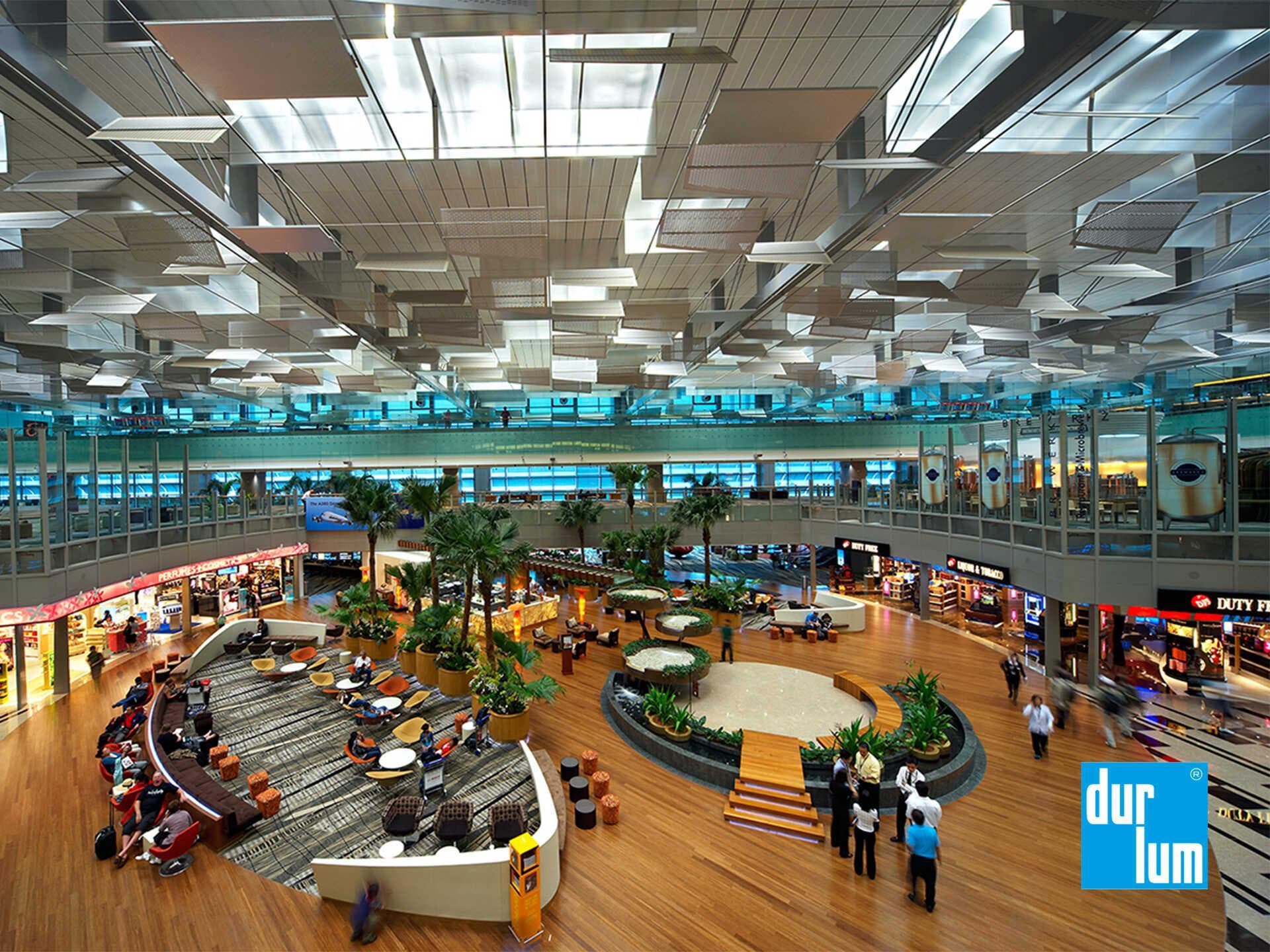The butterfly effect at Changi Airport Terminal 3: Ingenious design takes flight with durlum’s dynamic ceiling and light modulation system
Discover Changi Airport Terminal 3’s dynamic ceiling by durlum. Inspired by butterfly wings, the system’s anodised aluminium panels adjust to natural light, enhancing comfort and reducing energy use. This innovative design sets a new standard for sustainability in airport architecture.
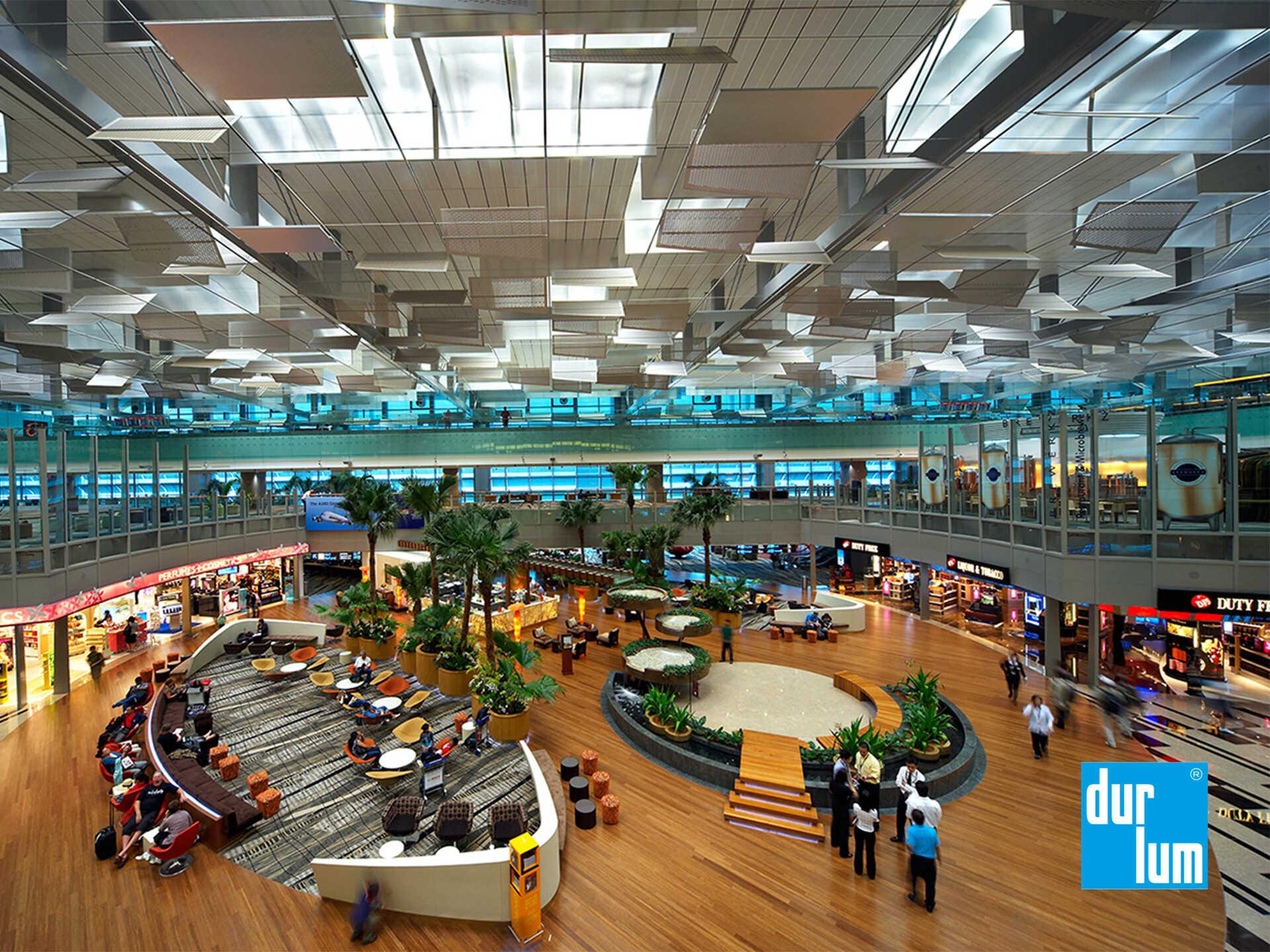
Airports have long captivated our imaginations – and for good reason. An awe-inspiring testament to humanity’s inventive spirit, airports are inspiring reminders of the transformative potential of bold design. Singapore’s flagship Changi Airport is no exception. In fact, this iconic complex of buildings, designed through a collaboration between SOM – Skidmore, Owings & Merrill LLP and CPG Corporation Pty Ltd, is one of the most innovative global travel hubs.
A perennial high-ranker in the “World’s Best Airport” awards by Skytrax, this busy airport is a pinnacle of ingenuity, and Terminal 3 stands out as a particularly fine example of architectural and engineering excellence. One of Terminal 3’s most outstanding design features is its custom ceiling and light modulation system by durlum, a leading developer of metal ceilings and lighting systems for architectural applications. Unique on a global scale for its robustness, sophistication and seamless integration of design and technology, durlum’s system enables the airport to capitalise on different light sources to create a comfortable environment for millions of travellers passing through the airport every year, while significantly reducing energy consumption.
The system’s eye-catching design language is inspired by the effortless kinetics of butterfly wings, a concept beautifully brought to life through a series of panels gracing the terminal’s roof. While their striking designs have certainly become a distinctive element of the building’s envelope, these 919 anodised aluminium panels engineered by durlum, are not merely decorative – they are fundamental to regulating the amount of natural light flooding the interior.
Each perforated panel is strategically positioned above a light well, and their movements are orchestrated by a central computer that receives real-time data from roof sensors. This allows the panels to respond dynamically to the sun’s angle and the prevailing weather conditions, ensuring optimal daylight while minimising unwanted heat gain.
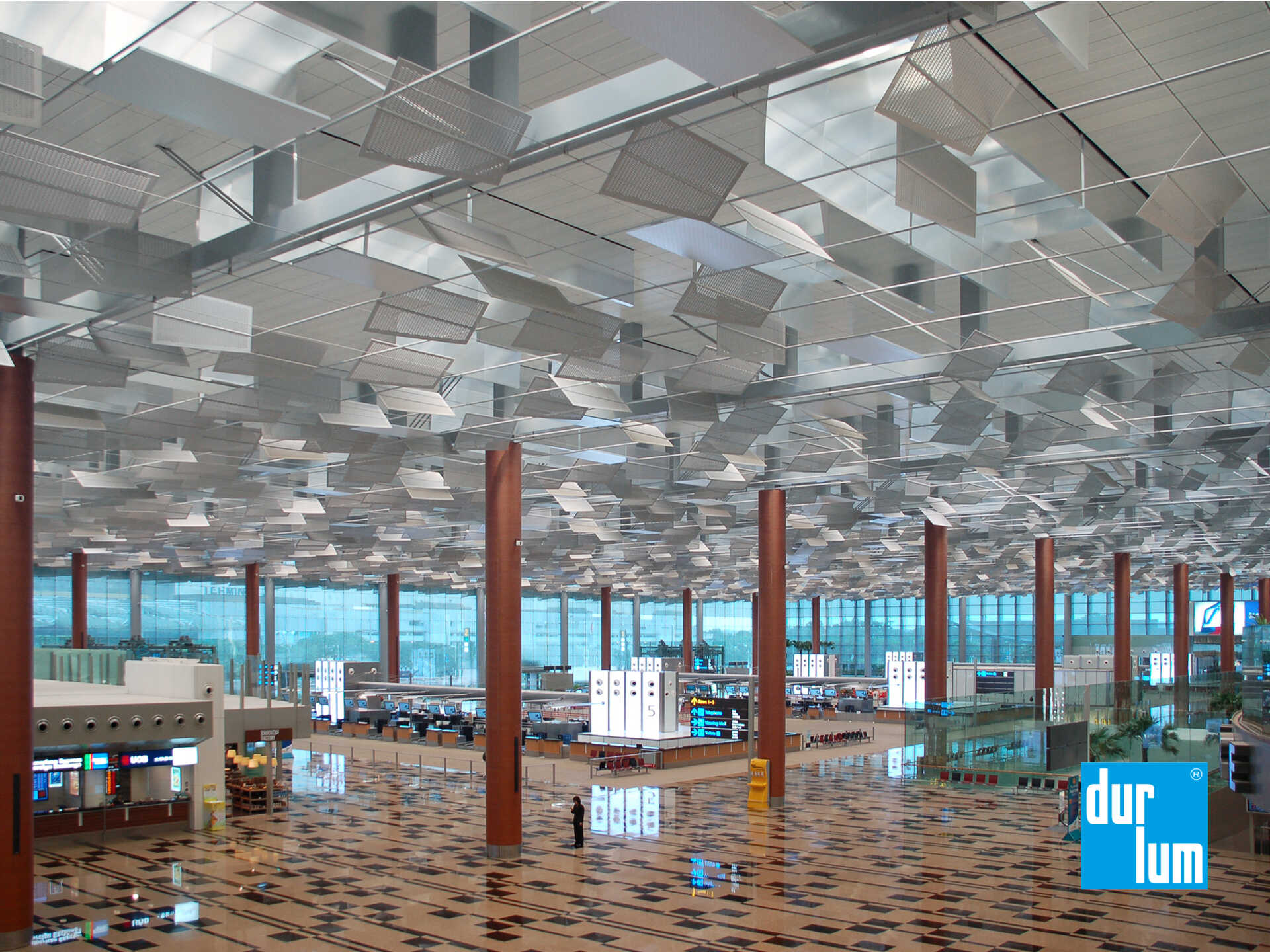
Inside the terminal, durlum’s ingenious light modulation system continues to stand out as one of the most distinct design features. Here, thousands of louvred ceiling panels work in seamless tandem with a network of overhead lights and light-deflecting reflective surfaces to capitalise on daylight, and use artificial lighting only when required. Spanning an expansive area of 60,000m2, this intricate, responsive system transforms the ceiling into a stunning, sculptural installation that emulates the very same dynamic movement of butterfly wings.
When natural light fades, 90 light projectors installed across the roof, along with direct and indirect lights throughout the terminal, seamlessly take over, ensuring a consistently well-lit and comfortable environment for travellers.
durlum’s dur-TRONIC system expertly manages this intricate dance of light, dynamically transitioning between natural and artificial light sources so seamlessly that the shifts are practically imperceptible to the crowds rushing through the airport. This extraordinary solution, custom-designed specifically for this iconic location, ensures a bright, comfortable and evenly lit environment, while the spectacular design of louvred skylights enhances the stunning, futuristic character of the interiors.
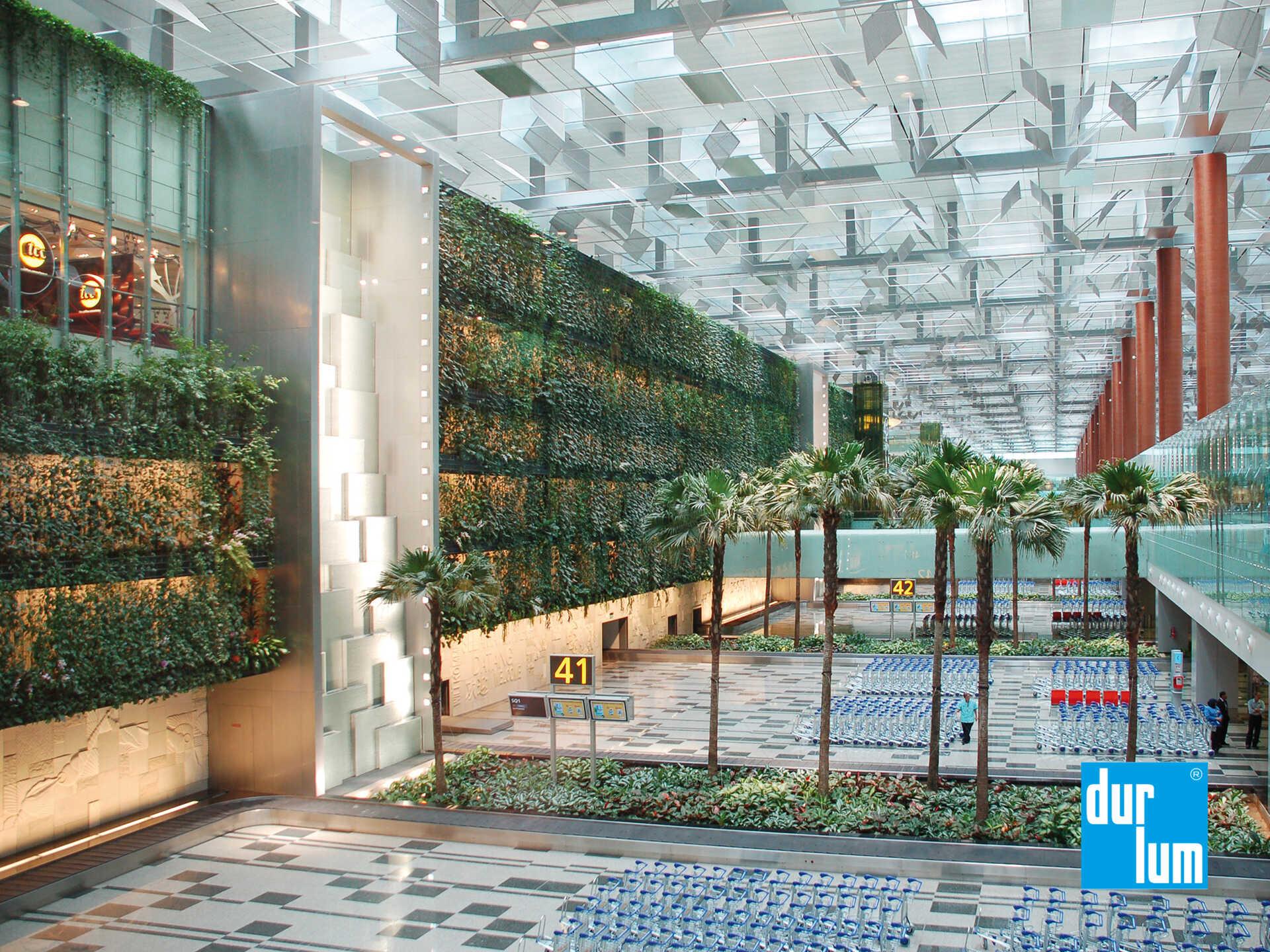
At the same time, this ingenious system significantly reduces the terminal’s energy consumption. Through a responsive and fully automated combination of daylight harvesting, reflective surfaces, and intelligent lighting control, the airport reports an estimated reduction of 2,400 tons of CO2 emissions annually. This reduction in carbon footprint – further underscored by the outstanding recyclability of durlum’s aluminium panels – is a testament to the incredible potential ingenious design can have on environmental performance.
The success of Changi Airport Terminal 3 showcases the transformative power of uncompromising, cutting-edge design, and collaboration between architects, engineers, and manufacturers. An exquisite example of custom design, this project serves as an inspiration for the future of commercial developments, demonstrating that aesthetic excellence, environmental responsibility and technical ingenuity can soar to new heights – and with durlum’s innovative ceiling and lighting solutions ambitious projects like this one can truly take flight.
Related Articles
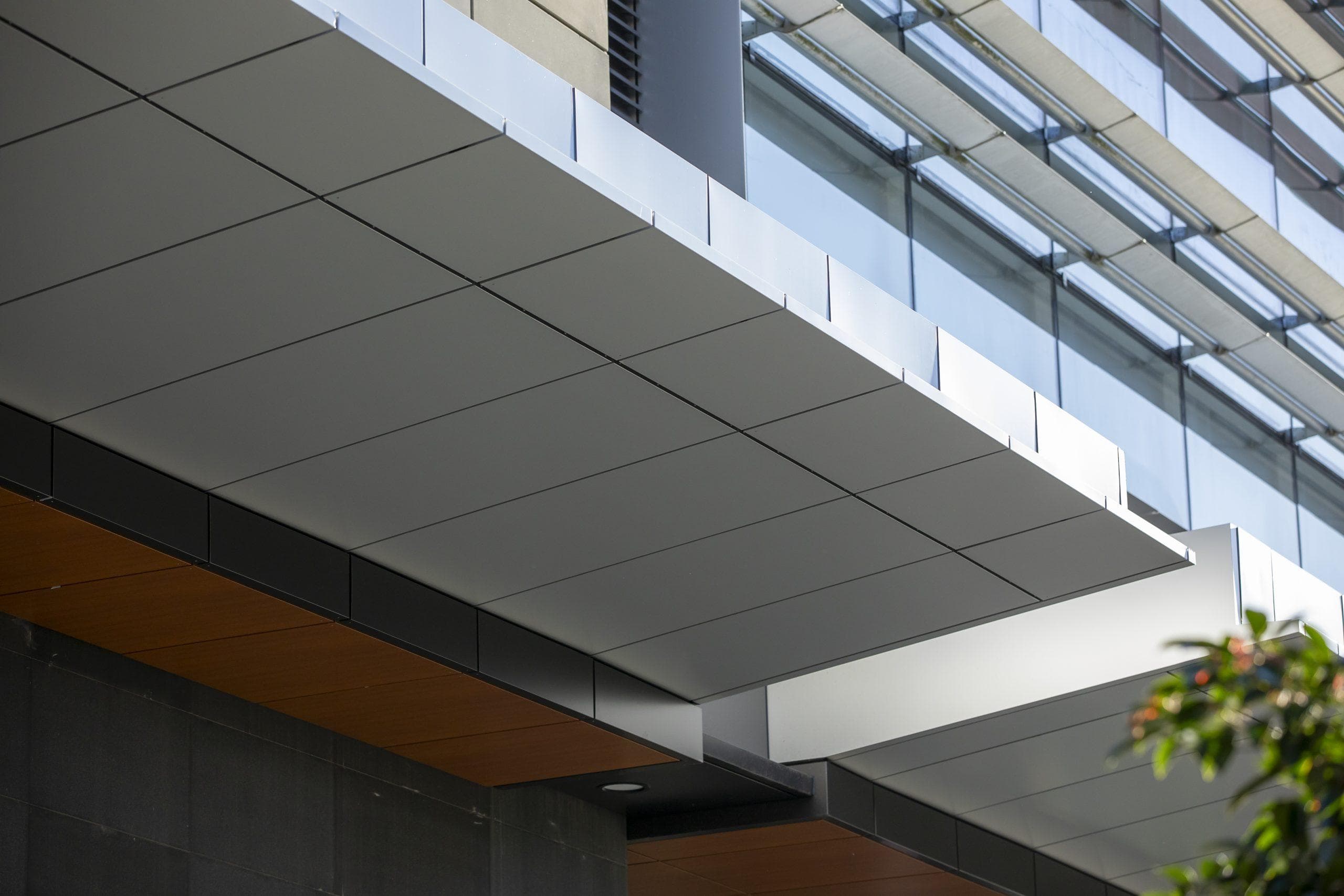
A declaration is a disclosure, not a sustainability guarantee: Network Architectural debunks the EPD myth
Environmental Product Declarations (EPDs) are invaluable for transparency, but they don’t automatically make a product sustainable. As Llewellyn Regler explains, EPDs are disclosure tools, not guarantees. This article unpacks the myth, showing why specifiers must look beyond the label to durability, maintenance, lifecycle cost and embodied carbon to achieve genuinely sustainable outcomes.
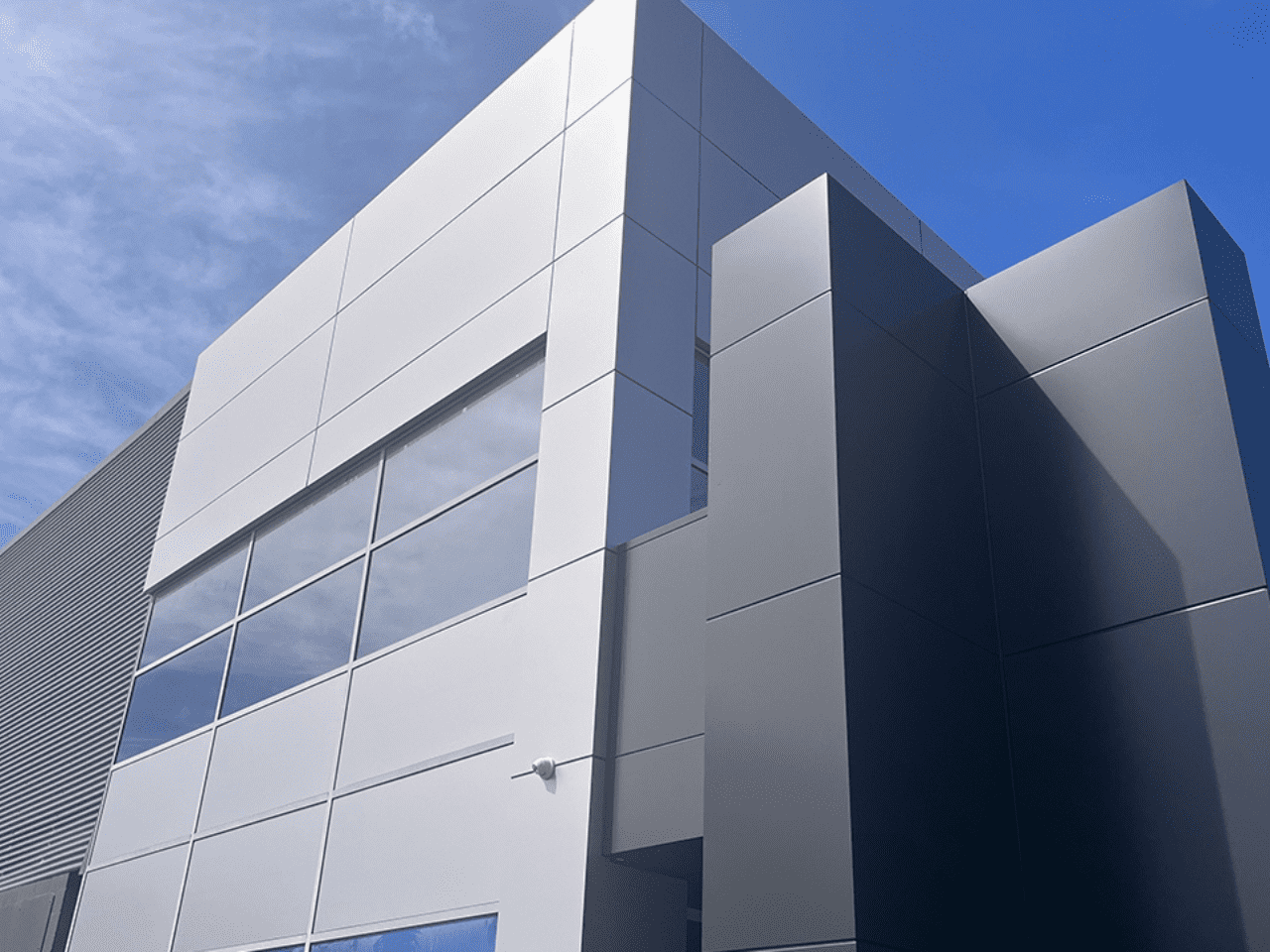
Specifying sustainable aluminium: Understanding the real environmental footprint of façade materials with LCA
Life Cycle Assessment (LCA) is fast becoming a must-have for architects navigating embodied carbon caps and stricter procurement standards. Yet, not all aluminium cladding is created equal. In this article, we break down how LCA helps specifiers cut through assumptions, compare Environmental Product Declarations (EPDs), and make sustainable, evidence-based design choices with confidence.
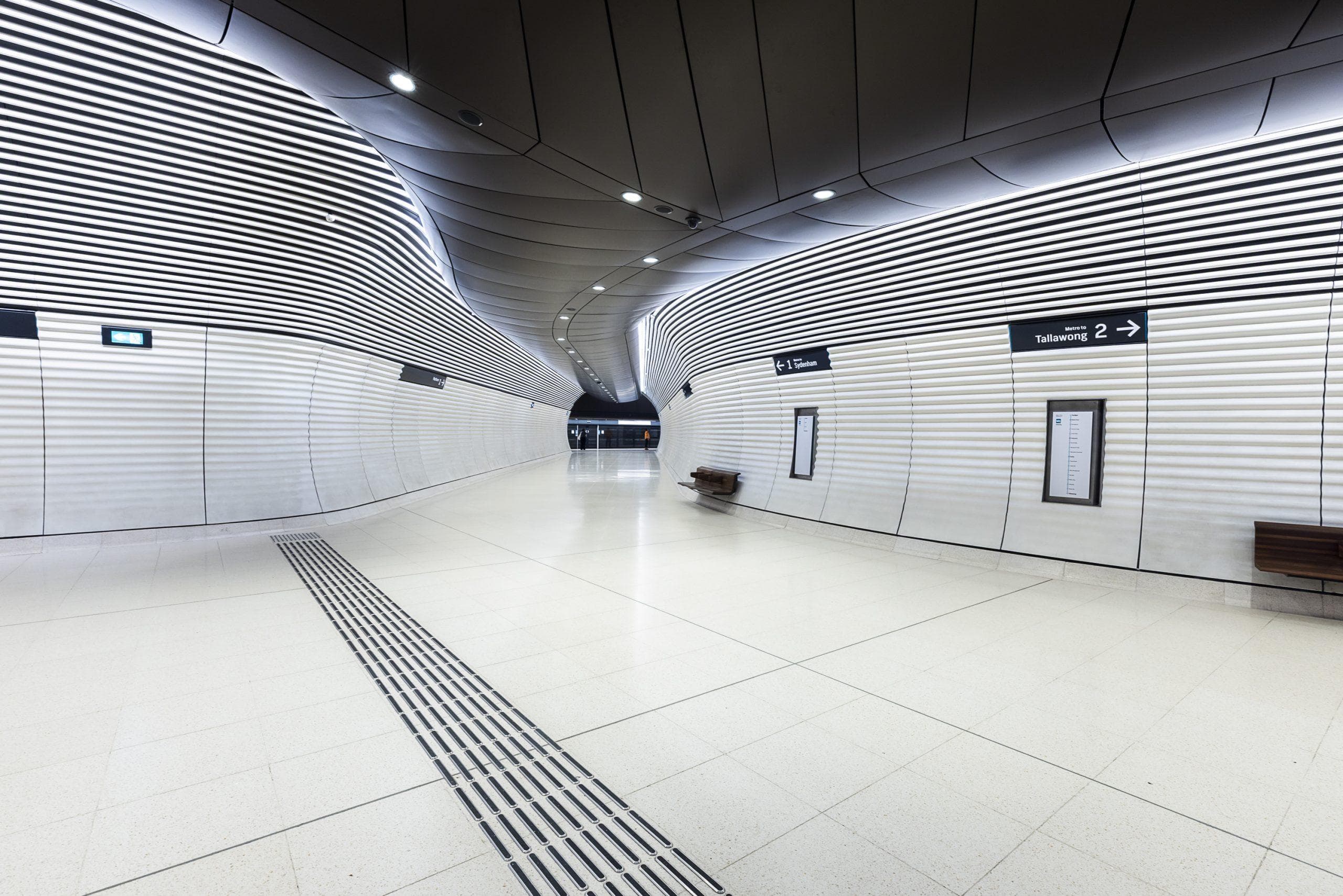
Zero-carbon aluminium: Distant dream or inevitable reality? Network Architectural weighs in
Is zero-carbon aluminium a distant dream or an inevitable reality? Advances in recycling, renewable energy, and smelting technologies mean the shift is closer than ever. Steven Fraser of Network Architectural explores how specifiers, architects, and builders can drive change today, shaping a more sustainable future for aluminium in construction.
